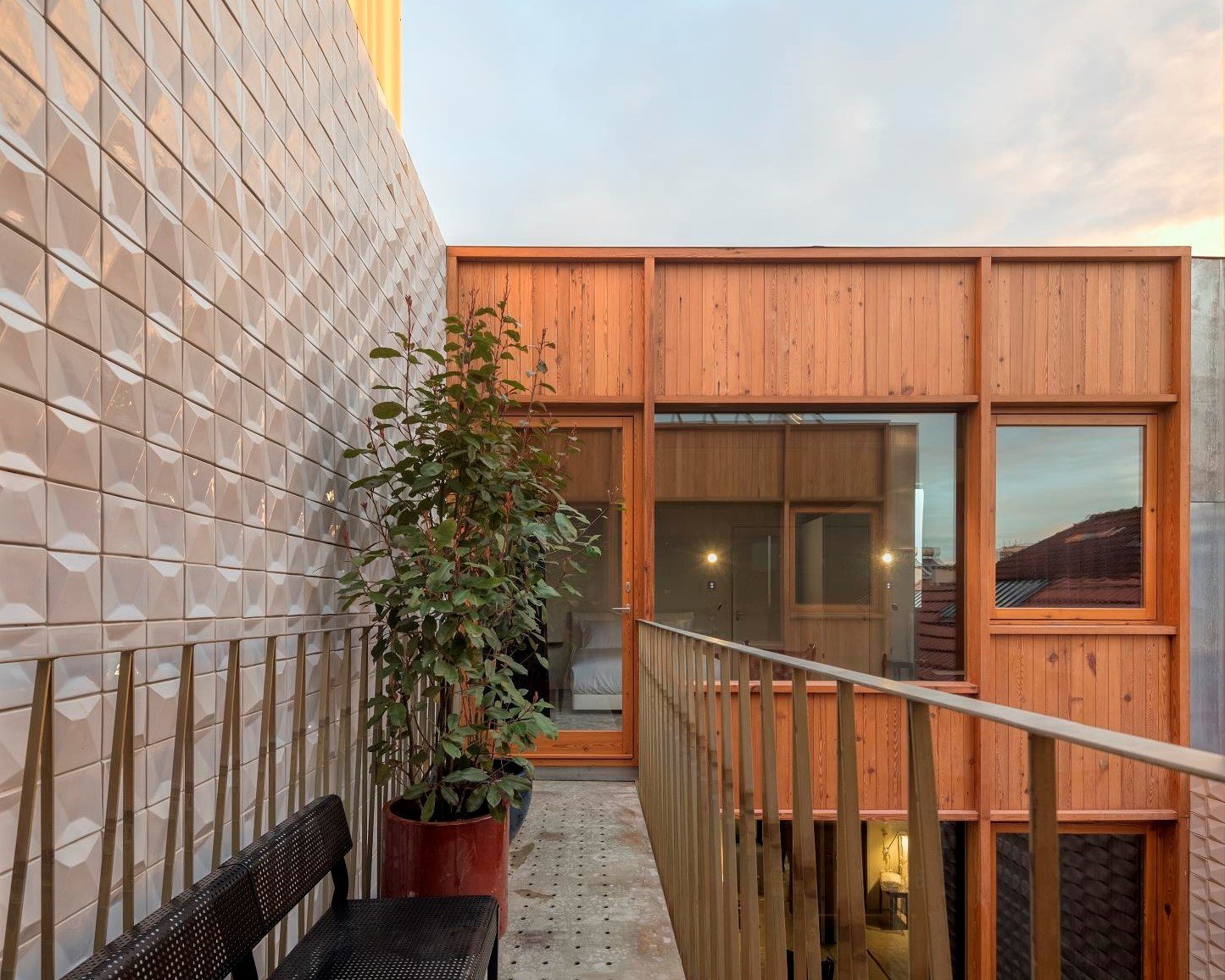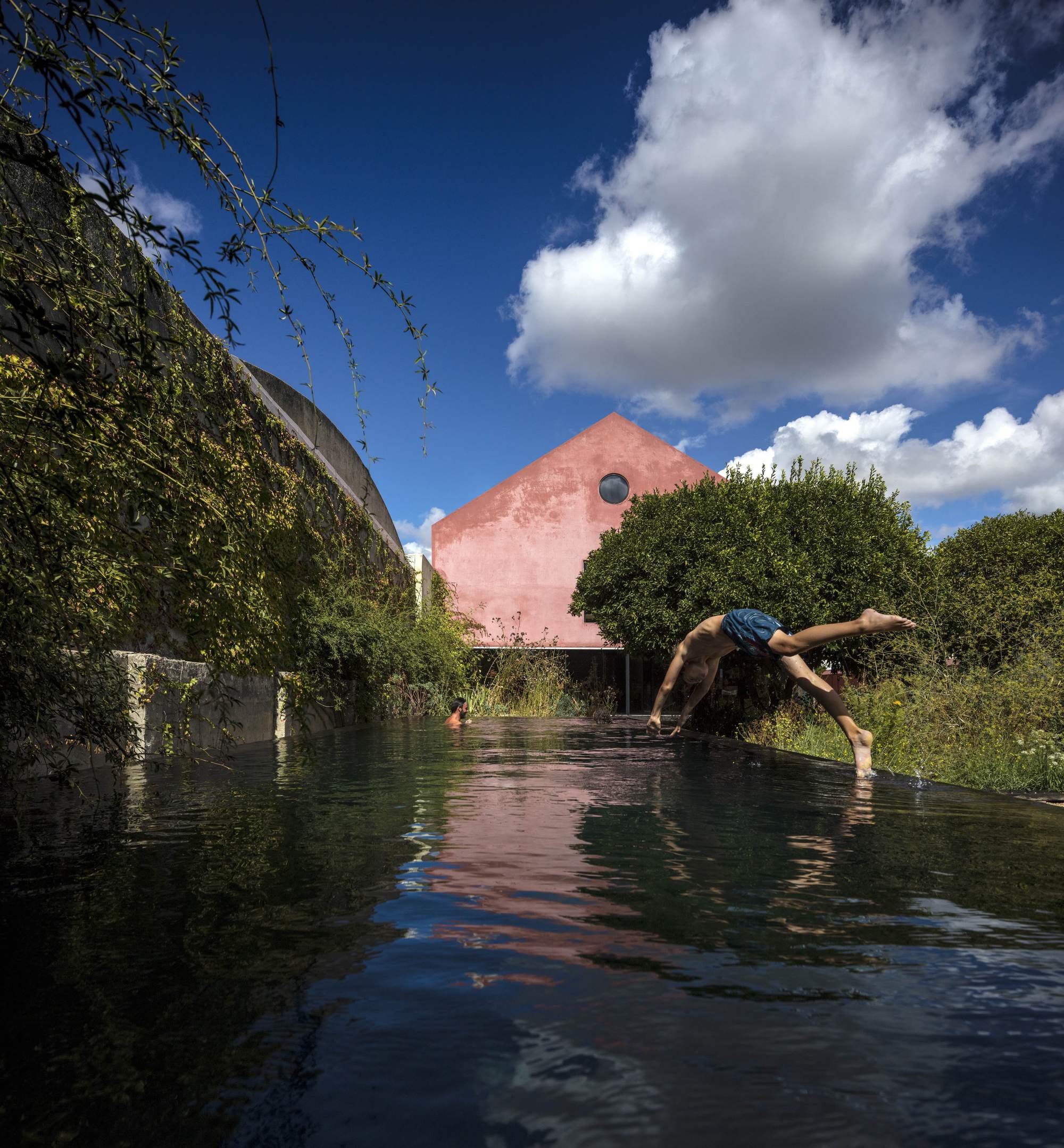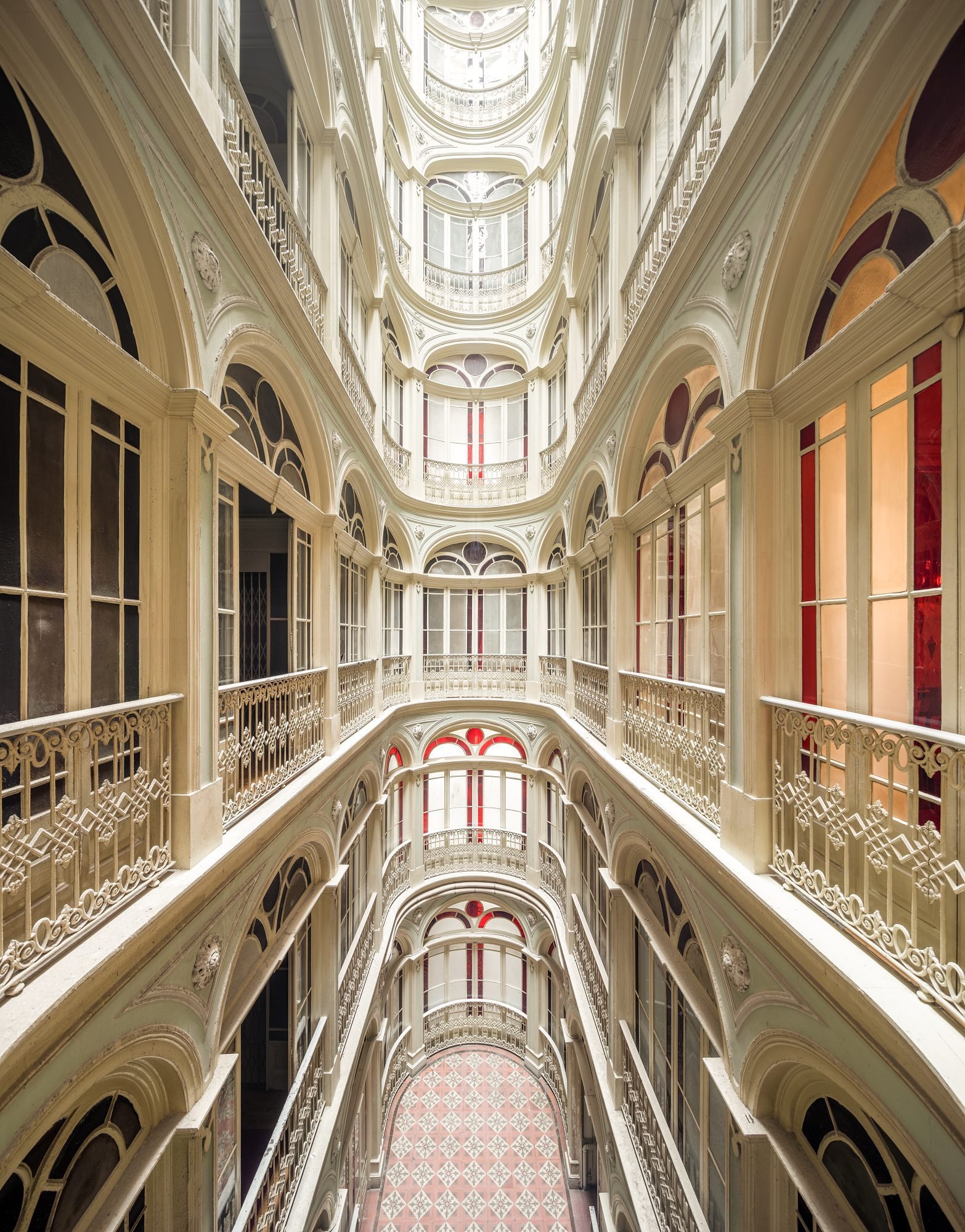[PODCAST]
In the third season, we had a conversation with architects Carlos Antunes, Désirée Pedro, Adalberto Dias, Pedro Guimarães, Eduardo Souto de Moura, Diogo Aguiar, João Maria Trindade, António Cerejeira Fontes, Marcio Kogan, Diana Radomysler, Suzana Glogowski, Bruno André, Francisco Salgado Ré, Adriana Floret, Nuno Grande, Rui Dinis, Henrique Marques, João Caldeira Ferrão, João Costa Ribeiro, Sofia Couto, Sérgio Antunes, and Gonçalo Byrne.
Season 3

Episode 26
“In Architecture, our role as architects is to respect and dignify absolutely the fragile life of those people, and we, architects, design for those people as we design for anyone. The thought that «those people don't deserve such good architecture» left us deeply shocked.”
[Carlos Antunes about Health House Rainha Santa Isabel]
Health House Rainha Santa Isabel © Photo Maria Bicker

Episode 27
“Naturally, architecture has multiple expressions and, in a sense, has no limits. It is infinite.”
[Adalberto Dias about The Guindais Funicular]
The Guindais Funicular © Photo Luís Ferreira Alves

Episode 28
“But when I go to visit the Gouveia Law Court, I feeling a bit disappointed because, in general, everything that is a public building has no maintenance.”
[Pedro Guimarães about The Gouveia Law Court]
The Gouveia Law Court © Photo José Campos

Episode 29
“When I am going to see what is being done, and what is being said about the project... the situation gives a terrible chill down my spine, and people don't know this, and comment: «If I were you, I would cut there and there...» Okay… but I started with an A4 sheet. I had no idea how this was going to turn out... because there is an idea that artists are people… who are not human... but they are human beings just like the others, and we run the same risks of failing…”
[Eduardo Souto de Moura about The Municipal Stadium of Braga]
The Municipal Stadium of Braga © Photo Christian Richters

Episode 30
“Maybe, we can make the analogy that a good wine must know how to age, and, in this sense, I would say that good architecture must also get to know how to age.”
[Diogo Aguiar about Aveleda’s Farm]
Aveleda’s Farm © Photo Fernando Guerra | FG + SG

Episode 31
“Since the beginning, the building was a big success with the animals, which, as we are facing a biological station, was the best compliment we could have ever had.”
[João Maria Trindade about Garducho Biological Station]
Garducho Biological Station © Courtesy of Ventura Trindade, Architects

Episode 32
“Architecture has to be able to transform and not just exist without being noticed. Sometimes architecture must appear without people noticing it because that is the role of architecture, but usually, it has to transform and change people's lives for the better. Architecture is one of the most exciting professions because it is a profession that transforms things and has a strong influence on people's lives.”
[António Cerejeira Fontes about Imaculada and Cheia de Graça chapels]
Imaculada and Cheia de Graça chapels © Photo Nelson Garrido

Episode 33
“I remembered a phrase by Niemeyer who said that architecture is not important. The important thing is life, friends, family... And then I included: «and a good barbecue!»”
[Marcio Kogan about C+C House]
C+C House © Photo Fernando Guerra | FG + SG

Episode 34
“Our generation has become much more empowered and capable of thinking about architecture and problems in such different ways: in dialogue with customers, in communication with players, and in the way we present ourselves to the world. We are, possibly, more open and listen to what people have to say, and we deal with problems differently. Thereby, we can find positive results that we are all proud of.”
[Francisco Salgado Ré about Águeda Arts Centre]
Águeda Arts Centre © Photo Fernando Guerra | FG + SG

Episode 35
“When we work with cultural spaces, this flexibility is crucial. And, sometimes, I think we tend to create very tight spaces, don't we? Because we imagined it. Because we idealized the white and the wall in a certain way, the furniture maybe has to stay in a certain way. In a cultural space, this is neither possible nor desirable.”
[Adriana Floret about Mira and Mira Forum Space]
Mira and Mira Forum Space © Photo João Morgado

Episódio 36
“When Sara invited me to this interview and told me that the podcast is called: ‘In the Country of Architects’, I remember answering: «In the Country of Architects, there are many more citizens and many more multitudes. An architect does not work alone». Therefore, the team spirit and the interdisciplinary (or multidisciplinary) team make the project gain consistency and coherence.”
[Nuno Grande about Tale: House and Typography]
Tale: House and Typography © Photo Fernando Guerra | FG + SG

Episode 37
“If there is one thing we have in these Roaring Twenties, I think it is the diversity of architectural languages. Even Portugal, fortunately, has already freed itself a lot of each school's languages. I consider that current generations are making architecture in different ways. And I also believe that this diversity is specifically the pretty thing about this time in which we live.”
[Henrique Marques, from the Spaceworkers studio, about the Interpretation Centre of Romanesque]
The Interpretation Centre of Romanesque © Photo Fernando Guerra | FG + SG

Episode 38
“We wish to try not to make an architecture that is just a composition. We want, above all, to demonstrate that everything can be changed. In other words, we want that people can change the spaces or change the way that spaces are being used through a device.”
[João Caldeira Ferrão, from extrastudio, about the Red House]
Red House © Photo Fernando Guerra | FG + SG

Episode 39
“When you saw Fernando Pessoa on the street, you thought he was a person just like everyone else. He looked handsome and he used to wear a hat. Deep down, however, he was living under a huge inner storm. This is the same reason we see so many of these buildings: many of them are the result of an inner storm.”
[Sérgio Antunes, from the studio Aurora Arquitectos, about Open House Lisbon,
organized by the Lisbon Architecture Triennale]
Chagas Apartment © Photo Fernando Guerra | FG + SG

Episode 40
“The curious thing is that, on one side, the cities have this heritage side, but then there is the other side, which is the living city. If the city does not adapt, and the buildings do not adjust to the styles of life, which are changed, they seriously risk being deserted. In other words, the city risk being abandoned and becoming an archaeological field.”
[Gonçalo Byrne about the Bank of Portugal headquarters]
The Bank of Portugal headquarters © Photo José Manuel Rodrigues



















